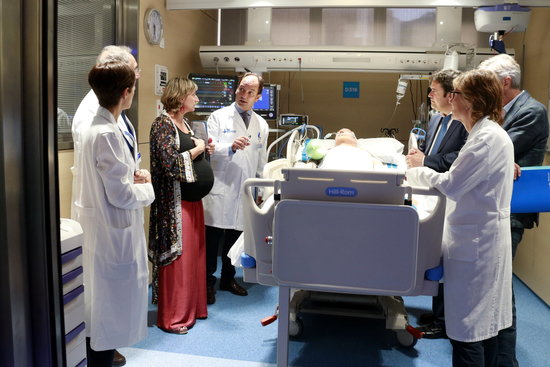Barcelona hospital unveils smart Intensive Care Unit
Using more advanced technology, professionals will be able to respond better to patients' needs at Vall d'Hebron facility

In the medical world, technology is key. Barcelona's Vall d'Hebron hospital has installed a new state-of-the art smart Intensive Care Unit (ICU) to replace its old one. The unit comes with more advanced equipment, connected to a programme that integrates clinical data with patient security. This allows a faster response to patients in need.
"When there's a serious problem, like a cardiac arrest, the very same building is capable of providing the conditions for professionals to attend to the patient correctly," explained Doctor Ricard Ferrer, head of intensive care at the hospital.
Rapid response
All patient info is linked to a smart screen where hospital staff can monitor their progress. A blue light before the patient's room warns if they are about to enter a critical situation, and the doors open automatically allowing easier access.
Substituting the previous unit, this ICU comes with an extension of 3,500 square metres and 56 individual spaces for patients, making the biggest in Spain as a whole. Its budget was 20 million euros.
"This smart ICU will incorporate new technology for giving the best attention to patients in a critical condition," said health minister Alba Vergés.
Smart beds and lighting
There are even "smart beds" and lighting that mimics the natural day-night cycle. The beds are connected to the Smart Display, relaying information such as the patient's weight, movements, position so they do not spend too much time immobile, and warnings of falls.
The unit expects to attend to around 2,200 patients each year. With this new technology, it will be able to do so in a more agile way than what was possible with the previous Intensive Care Unit. For patients and relatives alike, the changes are positive.
"I believe the improvement is obvious. For the relatives, for patients, and for the nurses," said Maria Ángeles Ruiz, sister of one patient.
Each patient also gets their own, more private space, and they are always under the surveillance of medical professionals, so their loved ones know they are in safe hands.